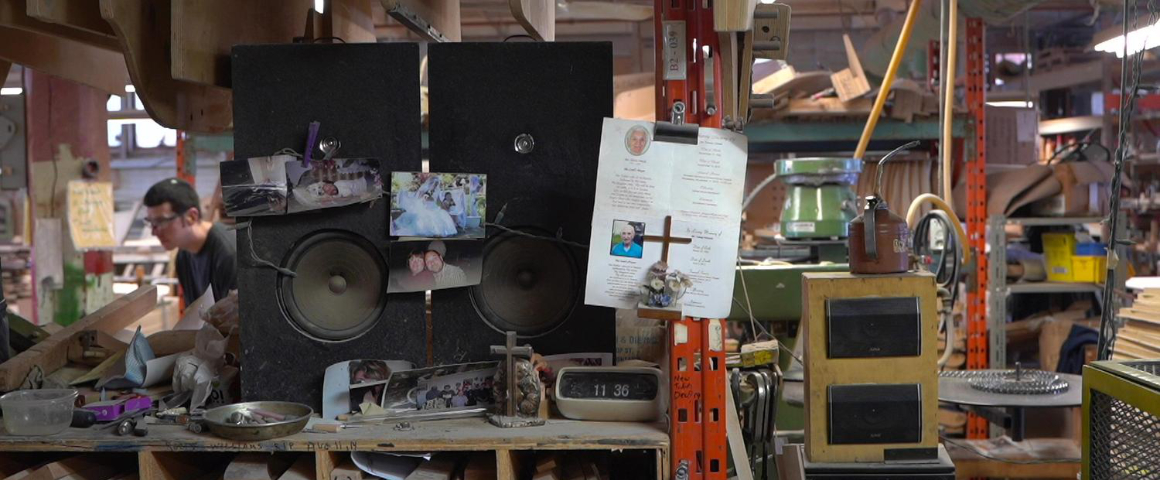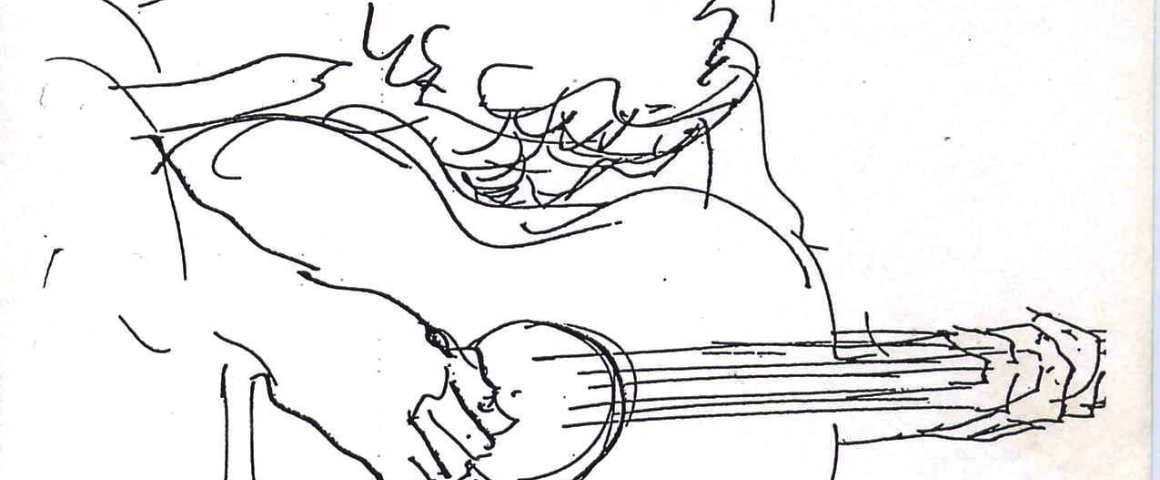Review by Manden Murphy
On view at The Plumb gallery in Toronto, Ian Willms and Liam Crockard’s compelling exhibition, At The Chair Factory, simultaneously manages to render labour the elephant in the room while brazenly highlighting its status as a commodity for consumption.
The exhibition is centered around the documentation of an anachronistic furniture factory and its workers. Krug Furniture, located in Kitchener, Ontario, has been manufacturing commercial furniture for over 140 years and currently employs around 500 workers. In the tri-cities region of southern Ontario, once a hotbed for the automotive parts industry as well as furniture and leather companies, Krug Furniture is now a novelty amongst multinational giants like Manulife Financial, Research In Motion (BlackBerry) and Sunlife Financial who have taken up residency there.
Methodically capturing as much detail of the factory as possible, the exhibition spans two separate gallery spaces within The Plumb. The north gallery is wrapped with 215 unique black and white photographs of the workers of Krug Furniture, as well as the spaces they inhabit and the workplace culture they produce. Taking in each photo individually one begins to recognize the minutiae of workplace customization that is bound to emerge in any work environment: family photographs, posters, graffiti on factory floor beams, stickers on radios, Sunday funnies, community announcements in break rooms, communal lotto picks, etc.
The south gallery has been converted into a small cinema for showing At The Chair Factory (February) 2019-2023, a three-hour video documenting the workers and their spaces over the course of their shift. The video roughly follows along the division of labour within the factory so that the viewer is guided through all the departments of the Krug establishment, from the first stages of assembly to upholstery to the warehouse. Shot in a deadpan style with no post-production narration for guidance, the viewer is forced to passively follow along as a worker nails together component parts of a chair to the sounds of local radio. Whether or not these workers are unionized, part-time or content with their working conditions remains below the surface of the ongoing process that is projected for viewers to consume: the production of value.
Taking in both galleries in their entirety amounts to a case study of what would appear to be a bygone era of production: industrial manufacturing. The effects of this are twofold. Firstly, it creates a sense of nostalgia for a simpler time when workers actually produced physical commodities and secondly, suggests an uneasy feeling that one is participating in a wake for something that hasn’t died, but has rather moved on to greener pastures. In this sense, the exhibition nods at the uneven development of capital, reminding its viewers that industrial manufacturing is alive and well, but only where profits are to be made and cheap labour is in abundance.
Thanks to this rare glimpse into “the hidden abode of production” that the artists have provided, the “secret” of value production is laid bare. In this era of decaying capital where the production of value has been obscured to parodic proportions, via the financialization of the economy, At The Chair Factory provides a chance to recalibrate our thinking and to question who claims to produce value, and more importantly for whom that value is produced.
This line of questioning is appropriate regardless of the age of the building one works in, lest the viewer slide into a misguided nostalgia for something that never actually existed. A curious moment in the exhibition didactic slips momentarily into just this sort of daydreaming: “Unknowingly capturing […] an economic depression that would last for decades, there was one building that never shuttered, collapsed or found a new life as a flexible workspace. One building in downtown Kitchener that still produces […] what the flaked and faded text states on the exterior: FURNITURE.”
However, what makes the exhibition such a success is how Willms and Crockard guide the viewer past this initial inclination to dwell in nostalgia and towards the realization that buildings don’t produce furniture, workers do. By allowing us past the threshold that allows “no admittance except on business,” the artists have provided a space for the viewer to consume everyday workers as they go about their jobs. It is through this sustained meditation that the viewer does become nostalgic, but for a time when workers were more keenly aware that while they were producing commodities, they too were reproducing themselves in order that they may be bought and sold as commodities in their own right.
At The Chair Factory is on view until February 19 at The Plum, 1655 Dufferin St, Basement, Toronto.
Photo: Still from video work At The Chair Factory (February), 2019-2023, courtesy Liam Crockard
Get People’s Voice delivered to your door or inbox!
If you found this article useful, please consider subscribing to People’s Voice.
We are 100% reader-supported, with no corporate or government funding.




